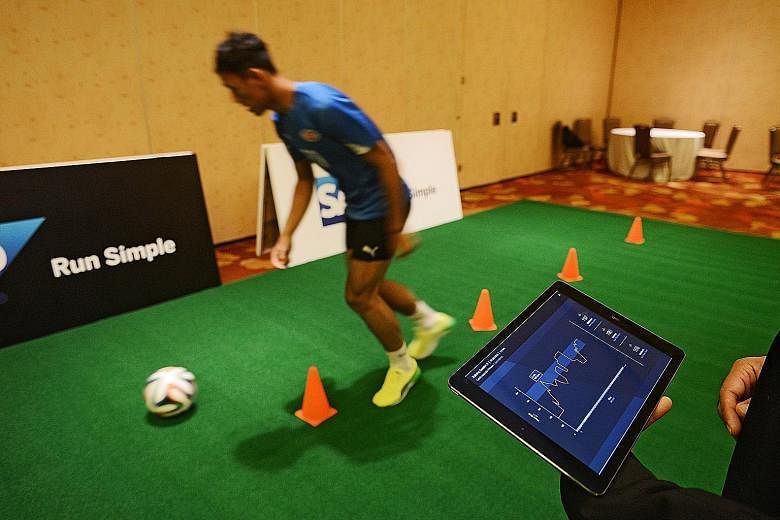Few sights are more dispiriting in sport than Derrick Rose collapsing on a basketball court while clutching his knee, or Lionel Messi grounded on a football field by a sprained ankle.
In a multibillion-dollar industry that continues to grow each year, injuries are the fourth-largest cost to sports franchises, after payroll, facilities and marketing.
According to a Major League Baseball study, the direct and indirect costs of injuries for teams - such as lower gate receipts and securing replacement players - has accounted for more than US$500 million (S$690 million) in the last five years alone.
But software giant SAP believes it has a game-changer in the form of its Injury Risk Monitor (IRM), a new application that is touted to make injuries less likely - and perhaps even preventable.
Using data collected from sensors worn by an athlete - along with statistics gleaned from their entire career and held on SAP's HANA Cloud Platform - IRM produces a percentage to indicate how likely each player is to injure themselves in their next match.
The system can also highlight which part of the body is most at risk. It takes into account how fit each player is, based on their diet and exercise regimen, along with the date of their last injury, and how long they usually take to recover from a variety of ailments.
IRM is at a proof-of-concept stage for cricket and football, with versions for American football, ice hockey and baseball also in the works.
Team physiotherapists will be able to see the reasons for the derived extent of risk, and then take appropriate corrective actions, such as lessening training load.
IRM made its South-east Asian debut at SAP's regional media summit at Marina Bay Sands yesterday.
Key data and injury probabilities flashed real-time on an iPad screen as Home United goalkeeper Zulfairuuz Rudy was put through light exercises after donning a skin-tight T-shirt with wearable sensors.
Scott Russell, chief operating officer for SAP Asia-Pacific Japan, said: "In all sports today, everyone is collecting all kinds of information, from sweat rates to breathing efficiency.
"But what we do is put it all together on one platform, analyse the data, and make logical, real-time insights."
SAP - an official partner of Germany's national football team, who won last year's World Cup - said IRM has garnered "significant interest" from top cricket and football sides around the world.
Home United's performance chief Dirk Schauenberg believes his job will become easier once the system is rolled out.
The German, previously a fitness coach at Bundesliga second-tier outfit Fortuna Duesseldorf, said: "We can show and teach the player how his body works, and what he can do to not only stay fit, but potentially prolong his career."


